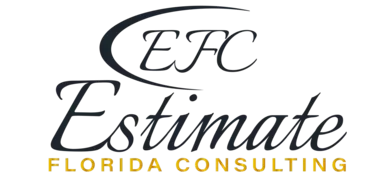Why More Builders Are Choosing Artificial Grass for New Homes in Florida and California?
Artificial grass is becoming a go-to landscaping solution for new home developments in warm-weather states.
If you’ve driven through a modern subdivision in places like Tampa or Orange County, chances are you’ve already seen it—green, lush, perfectly trimmed lawns with no sprinklers in sight.
It’s not just about aesthetics.
Builders are rethinking how to add long-term value to properties while sidestepping some of the region’s biggest climate headaches.

The Water Factor: A Game-Changer in Drought-Prone Areas
California’s water restrictions and Florida’s increasingly unpredictable storm seasons are pushing developers to innovate.
Maintaining a live lawn in either state can be an expensive and labor-intensive gamble.
With strict watering schedules, fines for overuse, and the rising cost of utilities, it’s no wonder homeowners and builders alike are seeking better solutions.
One of my neighbors in San Diego ripped out his lawn after getting hit with a $450 summer water bill—and that was just for lawn irrigation.
He replaced it with synthetic turf, and not only did his bills drop, but the HOA actually praised him for keeping his yard looking sharp during a Level 2 drought alert.
The Low-Maintenance Lifestyle Buyers Now Expect
Today’s homebuyers aren’t looking for yardwork.
They’re looking for weekend getaways, remote work, and lifestyle upgrades.
That’s why artificial grass appeals to new buyers, especially younger families and retirees.
No mowing.
No weeds.
No patchy spots under shade or from pet use.
Just consistent curb appeal, rain or shine.
And for developers building entire neighborhoods, installing artificial turf means fewer complaints and fewer maintenance contracts.
Here’s a helpful guide on artificial grass care that builders often share with new homeowners to show how simple upkeep can be.
It’s a selling point that resonates well in listing presentations.
Boosting Resale and Rental Value
In competitive markets like Miami or Los Angeles, builders need every edge.
A backyard with artificial turf instantly looks finished—like a move-in-ready space where the kids can run barefoot, or where outdoor furniture doesn’t sink into soggy grass after a rainstorm.
Real estate agents report that homes with synthetic lawns often sell faster and at a higher price.
Why?
Because they show better in listing photos and during open houses.
Even short-term rental hosts are leaning in.
I stayed at a Palm Springs Airbnb recently that had a putting green and firepit area surrounded by fake grass.
It looked so clean and inviting, and the host told me guests constantly compliment the yard in reviews.
Durability Meets All-Season Beauty
Builders want materials that last.
And synthetic turf today is not what it was a decade ago.
Modern versions come with UV protection, temperature control, and drainage systems built-in.
That means no fading, no flooding, and no mud.
Florida’s humidity?
Not a problem.
Southern California’s dry heat?
Handled.
Many products even offer 10–15 year warranties.
For builders, that’s peace of mind and fewer calls from homeowners needing help.
Pet-Friendly and Family-Proof
Let’s face it—dogs destroy lawns.
Digging, urine spots, and muddy paws after the rain.
Artificial turf solves all of that.
It’s designed with drainage layers and antimicrobial infill, so it dries fast and stays odor-free.
In fact, one family I met in Fort Lauderdale said switching to turf eliminated vet visits for skin allergies caused by fertilizers and pests.
Plus, their kids can now play soccer in the yard year-round, and cleanup is a breeze.
No dirt.
No bugs.
No stress.

Sustainability and Eco-Friendly Appeal
Consumers today are more eco-conscious.
And while artificial grass might seem synthetic, it’s actually helping reduce emissions.
No gas-powered mowers.
No chemical fertilizers.
No overwatering.
Builders can promote these points as part of their green building practices.
Many even qualify for LEED credits when incorporating synthetic landscaping elements.
In desert-edge communities, the savings on water alone add up to thousands of gallons per year—per household.
That’s a big win for builders marketing to sustainability-focused buyers.
Closing Thoughts: Not Just a Trend
Artificial turf isn’t a fad.
It’s part of a bigger shift toward smarter, more efficient living.
Builders who invest in it are not only saving on long-term costs, but also tapping into what buyers actually want: comfort, convenience, and homes that work with the environment—not against it.
If you’re walking through a new model home in California or Florida and notice the flawless lawn, chances are it’s not just for show.
It’s a practical, beautiful feature that’s here to stay.

